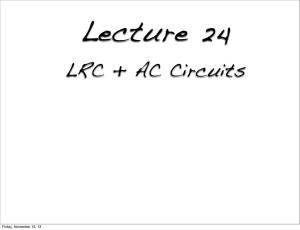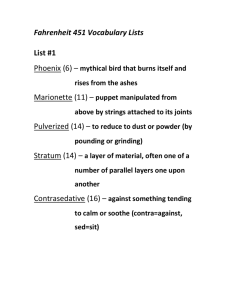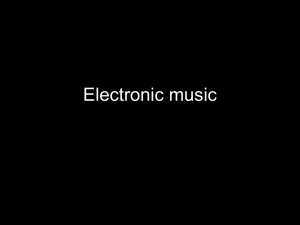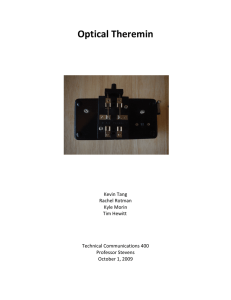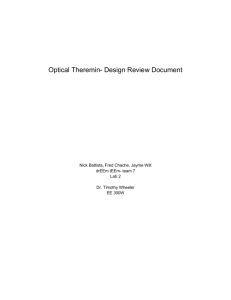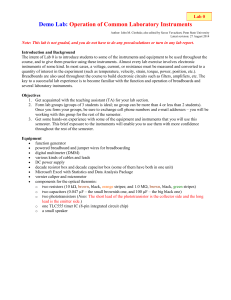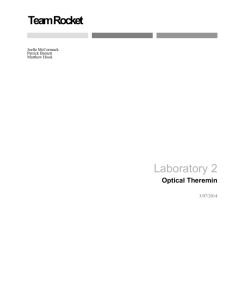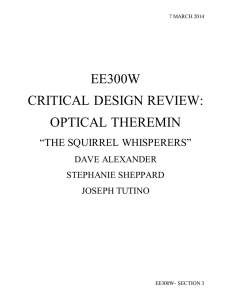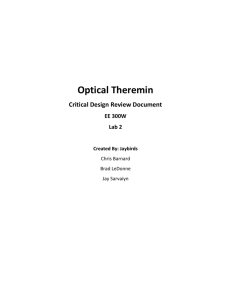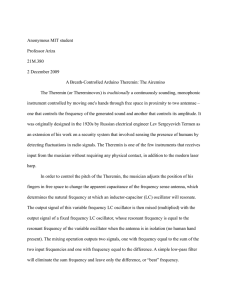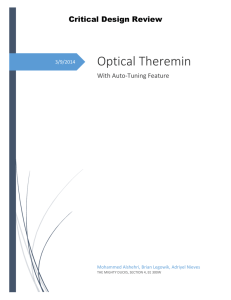Pre-WWII Electroacoustic Music
advertisement
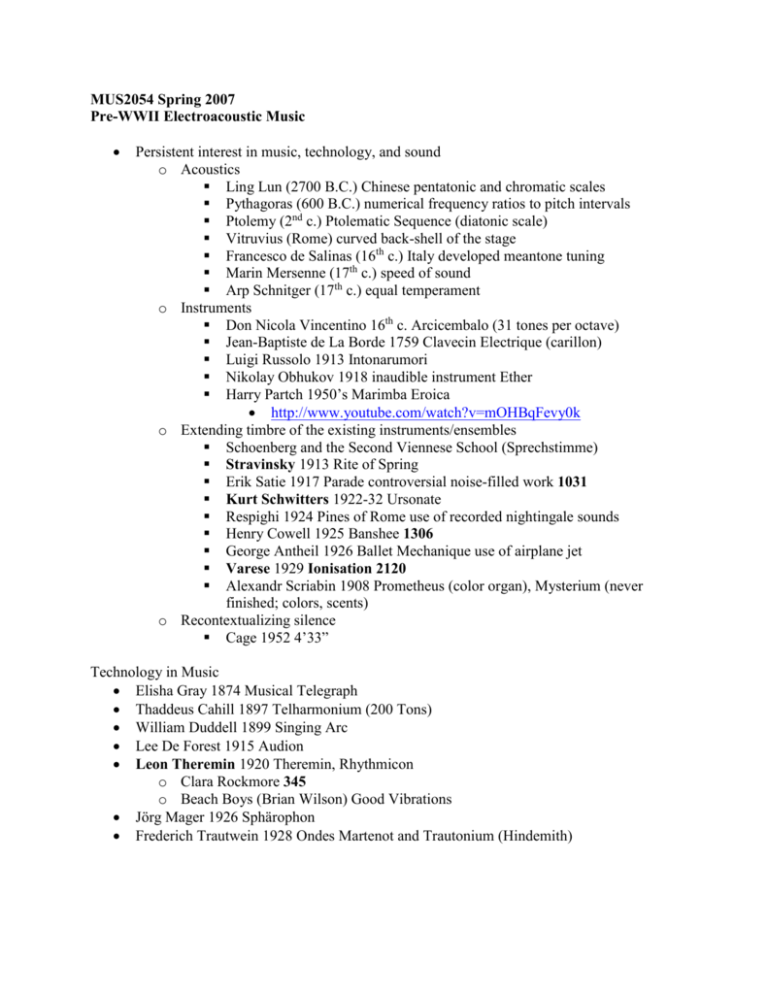
MUS2054 Spring 2007 Pre-WWII Electroacoustic Music Persistent interest in music, technology, and sound o Acoustics Ling Lun (2700 B.C.) Chinese pentatonic and chromatic scales Pythagoras (600 B.C.) numerical frequency ratios to pitch intervals Ptolemy (2nd c.) Ptolematic Sequence (diatonic scale) Vitruvius (Rome) curved back-shell of the stage Francesco de Salinas (16th c.) Italy developed meantone tuning Marin Mersenne (17th c.) speed of sound Arp Schnitger (17th c.) equal temperament o Instruments Don Nicola Vincentino 16th c. Arcicembalo (31 tones per octave) Jean-Baptiste de La Borde 1759 Clavecin Electrique (carillon) Luigi Russolo 1913 Intonarumori Nikolay Obhukov 1918 inaudible instrument Ether Harry Partch 1950’s Marimba Eroica http://www.youtube.com/watch?v=mOHBqFevy0k o Extending timbre of the existing instruments/ensembles Schoenberg and the Second Viennese School (Sprechstimme) Stravinsky 1913 Rite of Spring Erik Satie 1917 Parade controversial noise-filled work 1031 Kurt Schwitters 1922-32 Ursonate Respighi 1924 Pines of Rome use of recorded nightingale sounds Henry Cowell 1925 Banshee 1306 George Antheil 1926 Ballet Mechanique use of airplane jet Varese 1929 Ionisation 2120 Alexandr Scriabin 1908 Prometheus (color organ), Mysterium (never finished; colors, scents) o Recontextualizing silence Cage 1952 4’33” Technology in Music Elisha Gray 1874 Musical Telegraph Thaddeus Cahill 1897 Telharmonium (200 Tons) William Duddell 1899 Singing Arc Lee De Forest 1915 Audion Leon Theremin 1920 Theremin, Rhythmicon o Clara Rockmore 345 o Beach Boys (Brian Wilson) Good Vibrations Jörg Mager 1926 Sphärophon Frederich Trautwein 1928 Ondes Martenot and Trautonium (Hindemith) Recording/cataloguing of music Thomas Edison 1877 Tinfoil cylinder phonograph first recording (Mary Had a Little Lamb) Charles Tainter 1881 first lateral-cut records o 1885 Wax cylinder Bela Bartok 1888 first gramophone 1925 first electrically-recorded discs 1928 first magnetic tape (Dr. Fritz Pfleumer) o 1932 first plastic tape 1935 magnetophone (arrives to US in 1945) What follows is “emancipation of timbre.” Factors for proliferation of Electroacoustic Music: Advent of new technology Affordability Ability to record/catalog music Recontextualization of sound Breakdown of tonality Supporting playback materials: Schwitters Ursonate o http://www.ubu.com/historical/schwitters/ursonate.html o http://www.youtube.com/watch?v=GSLMjx29TAs CD 1306 Cowell Banshee CD 2120 Varese Ionisation http://www.youtube.com/watch?v=a9mg4KHqRPw CD 345 Rockmore Theremin CD 1031 Satie Parade Video 5079 (Theremin lessons)
